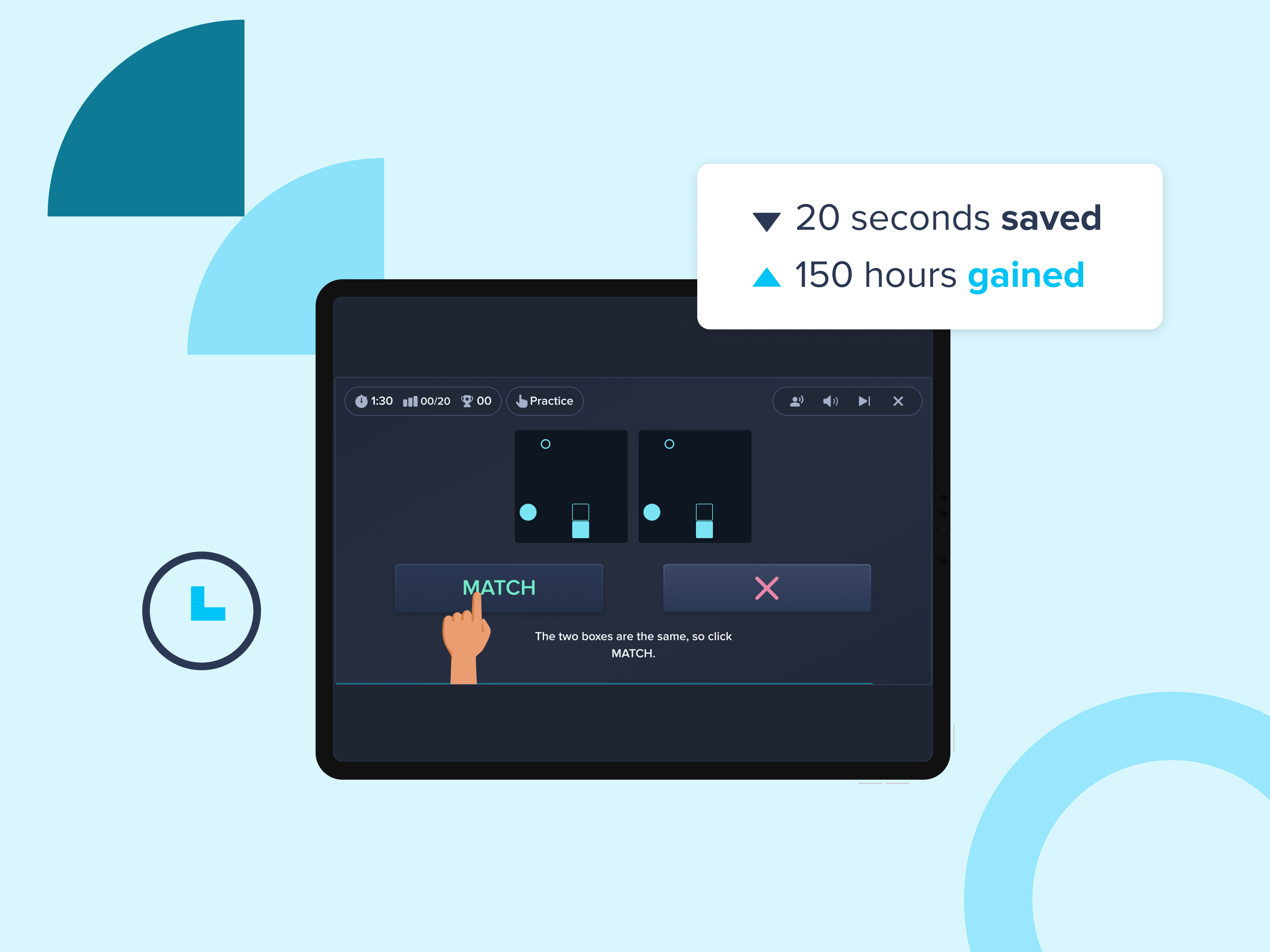
Efficiency at Scale: Creyos Enhancements That Keep Care Teams on Time
Published: 27/08/2025 | 2 min read
Written by: Creyos
Health systems and physician groups juggle thousands of patient visits every week, each layered with testing, documentation, and time with the provider. Even a few extra seconds of waiting or one extra step for each patient may not seem like much, but across hundreds of visits, it can be the difference between smooth operations and staff strain.
From working alongside providers and administrative staff during wide-scale implementations of Creyos assessments, we’ve seen firsthand how every second matters. Think of it this way: if a single patient spends 20 extra seconds on a task tutorial, multiplied by 100 patients per day across a few locations of a health system, that’s over 9,000 minutes, equaling 150 hours lost every week.
With this in mind, we’ve taken a microscope to the tutorials and practice rounds of the Creyos tasks—optimizing learning and saving time, without changing the part that delivers scientifically validated results: the scored task.
Shorter Tutorials and Practice Rounds: Every Second Counts in High-Volume Care
Each cognitive task starts with a tutorial and practice round to ensure patients understand the testing expectations and can perform at their best. Without affecting the scientific validity of the scored portion, this learning segment has been refined to eliminate redundant and unnecessary waiting time, including:
- Audio and visual instructions are played at the same time to speed up tutorials while driving information retention.
- Guiding animations move faster to match the pace a patient would complete a task, creating a smoother, more natural feel.
- Visual transitions are streamlined and combined to progress tutorials faster and sustain patients’ focus.
When these subtle refinements are added up, the total time to complete these tasks was cut down by 13%.
Small Tweaks, But Big Efficiency Gains for Large Organizations
When scaled across large organizations, like health systems, primary care networks, and integrated delivery networks, shaving seconds from tasks translates into hours reclaimed.
For healthcare professionals, these subtle, yet valuable, enhancements translate into less strain on healthcare professionals because even a small amount of saved time can be the difference between keeping pace and falling behind in back-to-back appointments. For patients, every second saved lowers the chance of dropping off, leading to greater engagement and better completion rates.
In healthcare, time is more than money—it’s quality, capacity, and outcomes.

